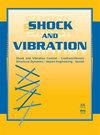应用于由联合阻尼器连接的两栋建筑物的杆件分配
IF 1.2
4区 工程技术
Q3 ACOUSTICS
引用次数: 0
摘要
对于由联合阻尼器连接的两栋相邻建筑,根据控制理论中的极点分配法提出了一个逆问题。结构系统被简化为两自由度(2-DOF)的总重阻尼剪切模型。统一的控制方程表达了抗震建筑、隔震建筑或被动控制建筑的指定控制目标与结构参数之间的关系,该方程被扩展到使用联合阻尼器的结构控制中。引入的方程可自动约束指定模态特性下的结构参数变化。极点分配法与定点理论的结合可直接从联合阻尼器的最佳能力中估算出目标建筑物的额外阻尼效果,从而改进了初步设计阶段的试错步骤。以往的定点理论不能提供附加阻尼效应,只能提供联合阻尼器的最佳阻尼系数。本研究将附加阻尼与联合阻尼器的阻尼直接联系起来。本研究使用了一个 20-DOF 建筑模型,其中两个 10-DOF 模型通过顶部块状质量之间的联合阻尼器连接在一起,并使用数值示例验证了理论整合。本文章由计算机程序翻译,如有差异,请以英文原文为准。
Pole Allocation Applied to Two Buildings Connected by Joint Damper
For two adjacent buildings connected by a joint damper, an inverse problem is formulated based on the pole allocation method in control theory. The structural system is simplified as a two-degrees-of-freedom (2-DOF) lumped-mass damped shear model. The unified governing equation, which expresses the relationship between an assigned control target and the structural parameters for an earthquake-resistant building, seismically isolated building, or passively controlled building, is extended to structural control using a joint damper. The introduced equation automatically constrains the variations in the structural parameters under the assigned modal properties. The integration of the pole allocation method and fixed-point theory directly estimates the additional damping effect on the target buildings from the optimum capacity of the joint damper, which improves the trial-and-error steps at the preliminary design stage. The past fixed-point theories do not provide the additional damping effect but the optimum damping coefficient of the joint damper. The present study directly links the additional damping with the damping of the joint damper. Numerical examples are used to verify the theoretical integration using a 20-DOF building model wherein two 10-DOF models are connected by a joint damper between the top lumped masses.
求助全文
通过发布文献求助,成功后即可免费获取论文全文。
去求助
来源期刊

Shock and Vibration
物理-工程:机械
CiteScore
3.40
自引率
6.20%
发文量
384
审稿时长
3 months
期刊介绍:
Shock and Vibration publishes papers on all aspects of shock and vibration, especially in relation to civil, mechanical and aerospace engineering applications, as well as transport, materials and geoscience. Papers may be theoretical or experimental, and either fundamental or highly applied.
 求助内容:
求助内容: 应助结果提醒方式:
应助结果提醒方式:


